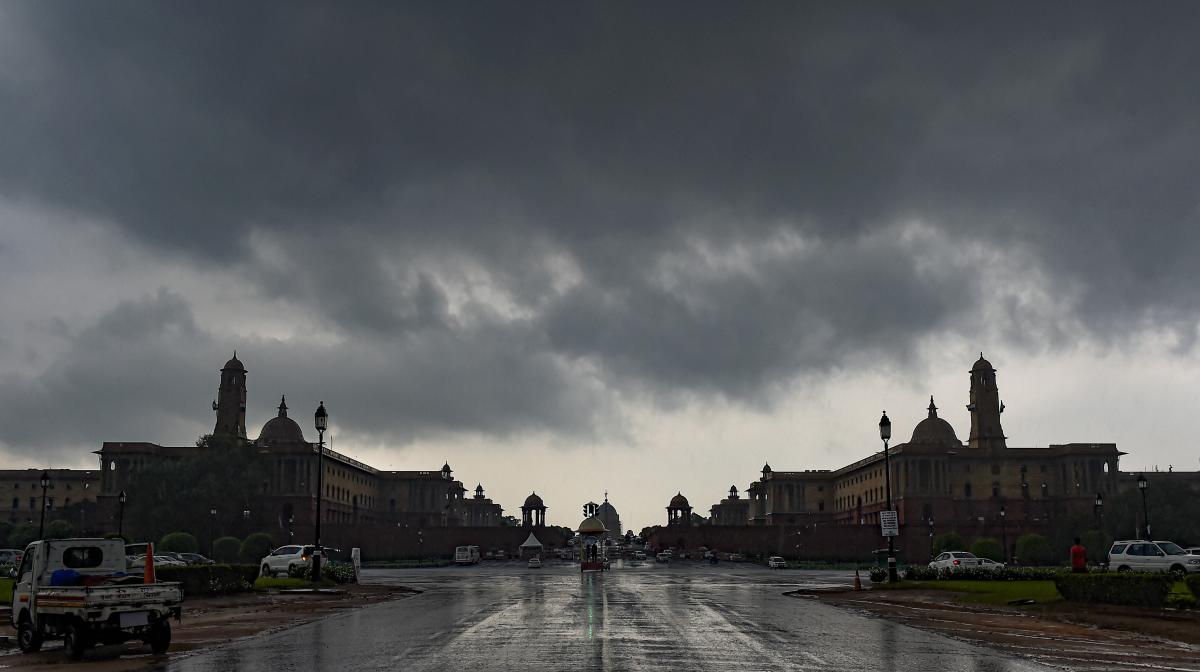Everyone lifts up their camera lens to click the clear skies of the capital city Delhi. Something extraordinary has taken place today. The city has recorded the lowest AQI (Air Quality Index) at ‘56’, under the moderate category. This is good news because usually, the figure remains above ‘200’, under the ‘poor’ category. But today, the air seems to reject pollution and has become light.
The drop in the AQI is coupled with the rise of average atmospheric temperature and rainfall. July, for instance, experienced the minimum temperature at 26.7 degree celsius, two notches above the season’s average. Similarly, Delhi recorded 913.1 mm rainfall, 56% above the average monsoon rains. During the summers, the city was boiling at 49 degree celsius, hot enough to cause harm to human health.
Leaving the numerics aside, Delhi is experiencing extreme weather conditions, from heatwaves to flooding. Not exclusively Delhi, but other cities like Chennai, Mumbai, etc are also facing unexpected weather patterns. Most cities witnessed the average temperature above 45 degrees this summer. However, none of these cities are ready to bear the damage caused by such weather pattern shifts. Not only is the cost incurred because of climate change huge, the damage caused by it is also massive.
Climate Change in the Global South: The Science Behind Heavy Rains in Delhi
On 11 August, Delhi woke up to the news of electrocution of an UPSC aspirant in Rajender Nagar. This was one of the 11 deaths heavy monsoon has brought to the city. The dramatic heavy rains in cities of India are yet to be fully studied by scientists, but many reports like the macro level studies from the Ocean and Climate Science department of IIT Bhubaneswar, the January edition of Kolkata based journal ‘Atmospheric Chemistry and Physics’, and other international papers suggest that heavy rains in the cities are a result of differential land use and pollution.
While all the cities battle climate change the same, the disadvantage Delhi has is that of high levels of Pollution.
“Pollution causes something called ‘aerosol invigoration’ which leads to the formation of thunderstorm clouds. Given sufficient time, such clouds can grow and cause thunderstorms and heavy rainfall in certain areas”, said Dr. V Vinoj to the environment journal ‘Down To Earth’.
When suspended pollution particles (of Carbon monoxide, etc.) increase in the air, water molecules use it as a surface to condense. This inturn creates black clouds and thunder storm. The hot temperature at the surface further creates a low pressure zone supporting the thunderclouds. This makes Delhi especially prone to heavy outpours. But this rainfall is not even across Delhi, since it is influenced by factors like urban land use, heat, pollution, population density, etc.
As a country of the global south, India will always be at the losing side of climate change, since it has a lower social safety net, poor infrastructure, huge coastline and an agrarian economy. While rich nations of the global North contienue to acquire land and labour at cheap costs in poor counties to build factories. There is a clear disparity in the distribution of the global economic pie, which subsequently translates into a disparity in climate relience. Not only at the economic level, this inequality also persists in the global climate goals decided by international bodies.
The Sustainable development Goals (SDG) of the United Nations aims to limit global temperature to 1.5 degree celsius pre-industrial level. But achieving this goal will be quadruple times difficult for poor countries of the global south. Not only India lacks technology to combat climate change, the nation is crippling with many big life and death matters at hand, like healthcare, education and dire unemployment.
What good can Climate Change CSR do?
It is required out of multinational companies, both indigenous as well as of the west, to assist developing countries like India, Bangladesh, Myanmar, Afghanistan, Taiwan and Philippines to battle climate change. State interventions and NGO activism are not all effective since the population at stake is huge and diverse. Moreover, the money required to bring any goods is also unimaginably enormous. The Economic Times projected the loss incurred by India in the year 2023 because of climate change to be 2.75 trillions. From this standpoint, India should look upto climate CSR interventions by prosperous companies.
The biggest Corporate Social Responsibility around climate change that India and other developing countries witnessed in recent times is that of the HSBC bank in collaboration with the British Council. The project aimed at training youth in Brazil, India, Indonesia, Vietnam and Mexico in climate action. Engagement of youth from both urban and rural areas was ensured in July, creating a link between hyper local committees of five developing countries. While hyper local targeting is more effective and can be managed better, global outreach creates synergy in efforts. This made the project a two sided sword.
Other than the state, only big corporate houses can think of walking a financially viable path to make collaborations both global as well as local at the same time. It goes without saying that climate change is a global problem impacting ice caps of both The Himalayas as well as The Alps (in Europe).


